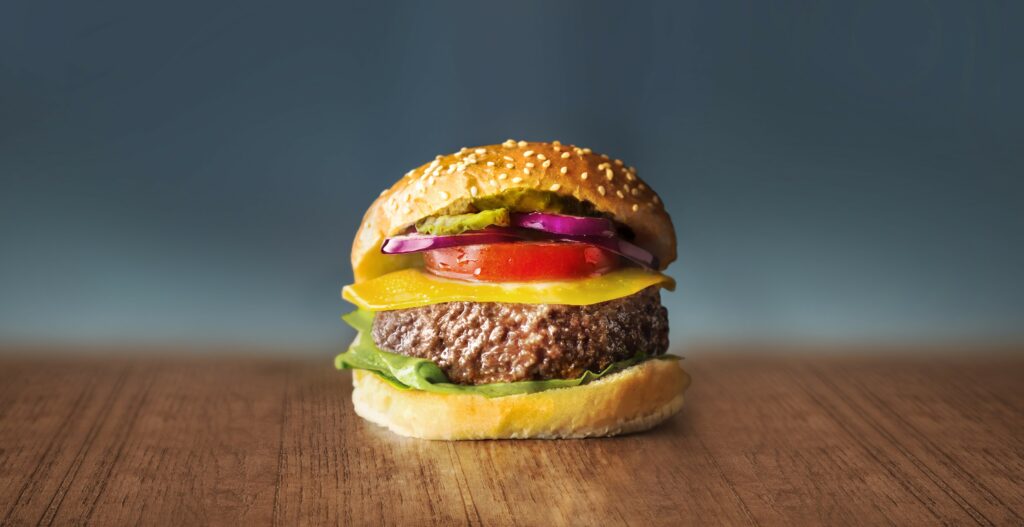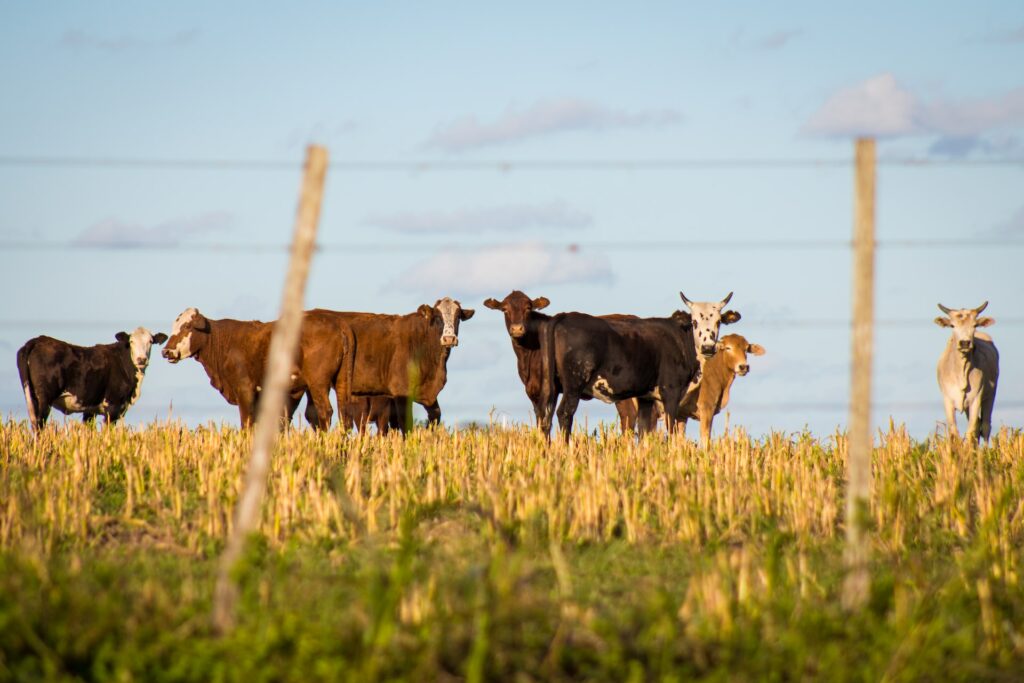Lab-grown meat – sometimes called cultivated meat – is being suggested as the future of food. But what is it?
How is meat ‘grown’?
Scientists have developed ways to create meat from an animal’s stem cells (from which muscles and organs are generated).
The muscle cells are put in a bioreactor with a growth solution that might include amino acids and carbohydrates. The cells then multiply and form muscle fibres, which end up looking like ground meat.
At first, foetal bovine serum was used to encourage the cells to multiply – but all the major startups have since developed cheaper, synthetic alternatives.

Is it the same as plant-based meat?
No, plant-based meat is an imitation meat made from plants and other vegan-friendly ingredients. Lab-grown meat is actual animal meat.
What kind of meat can be produced like this?
Beef, chicken, duck and fish are some of the meats being produced in labs at present. The same process can be used to make eggs, milk and leather, too. One startup, Primeval Foods, is creating exotic meats from animals such as tigers and lions.
What does it taste like?
People who have tried cultivated meat say it tastes just like regular meat – though there are some slight differences in consistency.

Why do we need to grow meat in a lab?
The amount of animal products we consume is a major driver of climate change. As the global population grows and more of us eat meat and animal products as part of a regular diet, this impact is set to get worse.
Around a quarter of the world’s ice-free land is used for livestock grazing and a third of croplands are used for animal feed. Livestock supply chains create about 14.5% of our greenhouse gas emissions and cattle are responsible for about 65% of that figure – their methane emissions are particularly potent.
Lab-grown meat offers an alternative to current farming methods.
So it’s better for the environment?
It’s too soon to tell for sure, as the scale of production is so small.
Lab-grown meat obviously requires far less land and dramatically reduces the need for water and livestock feed.
The energy required to produce meat in a lab is very high – so companies need to prioritise using renewable energy. If clean energy is used for lab-based production, the greenhouse gas emissions will be a fraction of those of the livestock industry.

Does it have the same nutritional value?
Producers claim their lab-grown meat has the same nutrient profile as regular meat.
They may even be able to improve on it, according to UPSIDE Foods, by reducing saturated fats, for example, or adding vitamins.
Regular meat can contain growth hormones or antibiotics that may put humans at risk of antibiotic-resistant microbes – lab-grown meat won’t have those problems.
Are there downsides to lab-grown meat?
If cultivated meat takes off, some farmers may face a loss of livelihood and agricultural jobs may be lost. Livestock farming will still be required for lab-grown meat, but on a much smaller scale.
Another downside is the cost – lab-grown meat is expensive at the moment. The first lab-made burger cost about US$330,000 to research and produce back in 2013! But we’ve already come a long way from that price tag.
Mass production will make lab-grown meat considerably cheaper. Mosa Meat, a Dutch startup, said their burgers could be about US$10 each once they scale up. Meanwhile, GOOD Meat (part of the California-based company Eat Just) sold its chicken at a loss in Singapore for four Singapore dollars (around US$3) per dish at the famous Loo’s Hainanese Curry hawker stall.
Some people simply may not like the idea of eating meat produced in a lab. It’s also not suitable for most vegans, as a product of animals. Vegetarians, however, might be split down the middle – it’s not a product of slaughter and it doesn’t have the same environmental impact of regular meat, but it is still meat. And religious groups will also have to determine whether cultivated meat should be viewed as the same as or separately to normal meat.
When will we be able to buy lab-grown meat in the supermarket?
We’re still some years away from cultivated meat being available to the mass market, but it has been available in Singapore since 2020.
Other markets have yet to approve the products, partly because a regulatory framework still needs to be put in place. But people in Western countries can probably expect to see lab-grown meat on the shelves very soon – the US FDA is expected to make a decision on cultivated meat later in 2022 or 2023.
Sources
European Environment Agency, Artificial meat and the environment
Good Food Institute, The science of cultivated meat
Goodwill Community Foundation Global, What is lab-grown meat?
Science Focus, What is lab-grown meat? How it’s made, environmental impact and more

